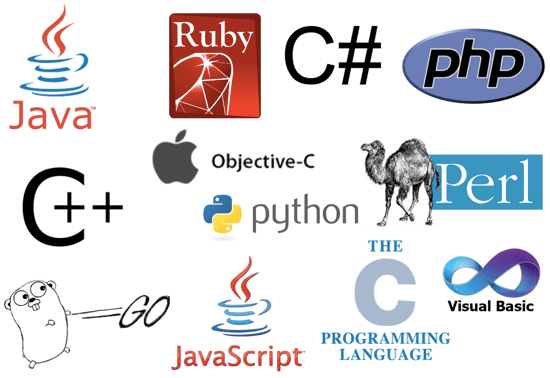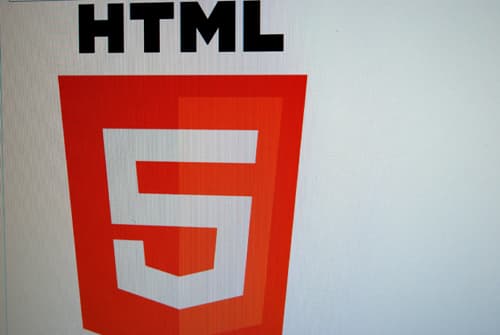The Top 10 Web Technologies
Web technologies are the quintessential building blocks that would help computers to connect with one another through the medium of internet over a variety of networks like Metropolitan Area Network (MAN), Wide Area Network (WAN) and Local Area Network (LAN). It is through the help of these web technologies that communication is made possible and it is through them that we send messages to someone, retrieve messages that someone sends you and so on. Web technologies, thus act as a platform through which effective communication is made possible. The article discusses 10 of the web technologies used by web developers, currently. Let us go through those
- PHP
PHP, the acronym for PHP: Hypertext Preprocessor is one of the most popularly used scripting language, the scripts themselves are executed on the server. It is open source and free to download and use. With PHP, web developers can create dynamic page content, send and receive cookies, encrypt data, edit the data in your database, edit user-control access and do anything with the files on the server. The beauty of PHP is that it is not limited to output HTML, you can output images, Flash movies, PDF files, and even text.
- Ruby On Rails
Ruby On Rails is a web programming language that make developers happy. Being a model–view–controller (MVC) framework, it is a bit conventional, but provides default structures for database, web services, and web pages. Created by Yukihiro “Matz” Matsumoto, this programming language is one among the top ten because it is a general purpose programming language well-known for its uses in web programming. The language, also known fondly as the Rails, has software added to its ‘library’. It plays an integral role while creating websites and is easy to maintain.
- ASP.NET
ASP.NET is an open-source server-side Web application framework favored by web developers for creating websites. It is integrated with a comprehensive software infrastructure, but supports three development models – Web Pages, MVC (Model View Controller), and Web Forms. These three are now merged into one framework called MVC 6. In order to establish bilateral communication in browser-to-server relationship, programmers use HTTP commands and policies, because ASP.NET works on it.
- JavaScript
Though JavaScript may share several features and owes its structure to Java, it is an independent programming language. It was initially developed by Netscape so web developers can create interactive websites. The features of this object-oriented computer programming language are quite powerful, complex, and falls in the same category as C and C++. Another feature of Javascript is that it runs in the client – the browser, so you can disable the script in your browser when you don’t want it to work. With JavaScript, you can make your web pages really responsive.
- AJAX
AJAX means Asynchronous JavaScript, and XML is powerful and definitely a fast way of developing interactive web applications. However, AJAX uses CSS for presentation, JavaScript for dynamic content display and CSS for presentation. This web browser technology works independent of web server software. When you use AJAX and fill out a form and hit submit, it is JavaScript that generally makes the request to the server, interprets the results and shows them on the screen.
- jQuery
jQuery is small and feature rich, but it makes HTML trivial in comparison. It is easy to manipulate and perfect for animation and event handling. API makes it easy to access different browsers. A developer who has basic knowledge of HTML, CSS and Javascript can work with jQuery. The most popular feature of jQuery is that it is quite extendable.
- Dreamweaver
Dreamweaver is the visual development tool for creating and managing websites, and even web content. This is a proprietary web development tool developed by Adobe Systems. What web developers love about this tool is that it is mostly what-you-see-is-what-you-get kind of interface. The beauty of Dreamweaver is that it is so versatile that you can create both complex and simple sites with it.
- HTML
Hyper Text Markup Language or HTML is a markup language with a set of markup tags. Each tag is used to describe different document content. It has a set of codes that would be inserted in a file meant for display on the browser page. Actually, these HTML tags are hidden keywords and it is their duty to define how the content should be formatted and displayed in a webpage. In order for the tag to be valid, the browser must contain understandable and recognizable tags.
- CSS
Cascading Style Sheets or CSS is a style language that covers just about everything – fonts, colors, margins, lines, height, width, background images, advanced positions and more. The main advantage of CSS is that it controls the layout of many documents in a single style sheet. This allows you to have a precise layout. With CSS, you have access to several advanced and sophisticated techniques.
- HTML5
This is fairly recent, released in 2008! The main function of HTML5 is of course, to structure and present content for display in the internet. This is the fifth version of the standard HTML and was intended to solve all the compatibility problems that developers faced with HTML. While the older versions of HTML require proprietary plugins and APIs, loading is extremely easy with HTML5. The element can run by itself, so there is no need for a Flash plugin.
These are 10 of the most commonly and popularly used web technologies. This list is not made on the basis of any ranking.
Interesting links about the topic:
Top web Technologies
Best Web Technologies
Pictures: Flickr.com/ Iversen/ Sussman/ Pollak

The author: Reema Oamkumar is engaged as a thought leader at Software-Developer-India.com which is a part of the YUHIRO Group. YUHIRO is a German-Indian enterprise which provides programmers to IT companies, agencies and IT departments.



Dreamweaver is not web technology. it should not be there 😉